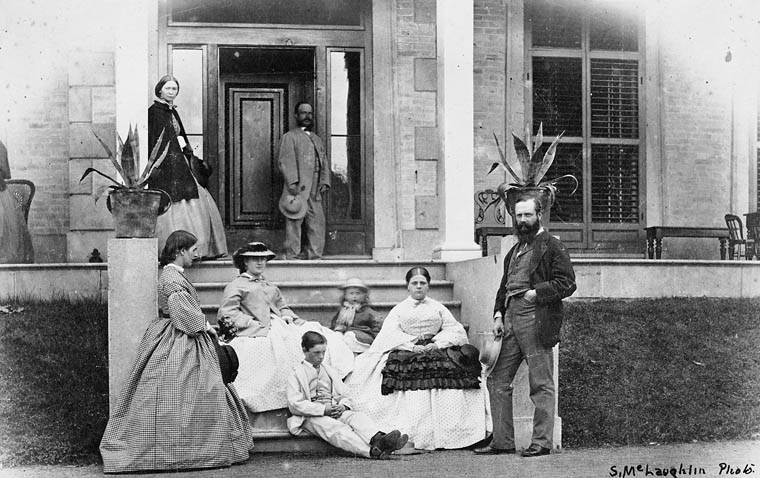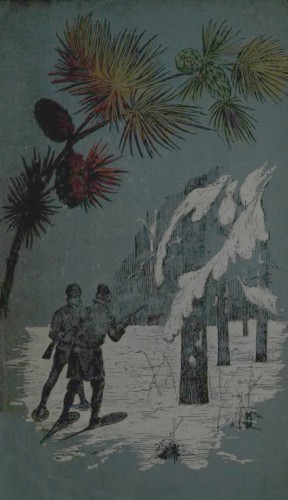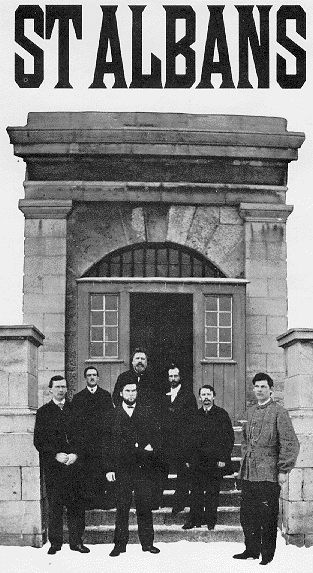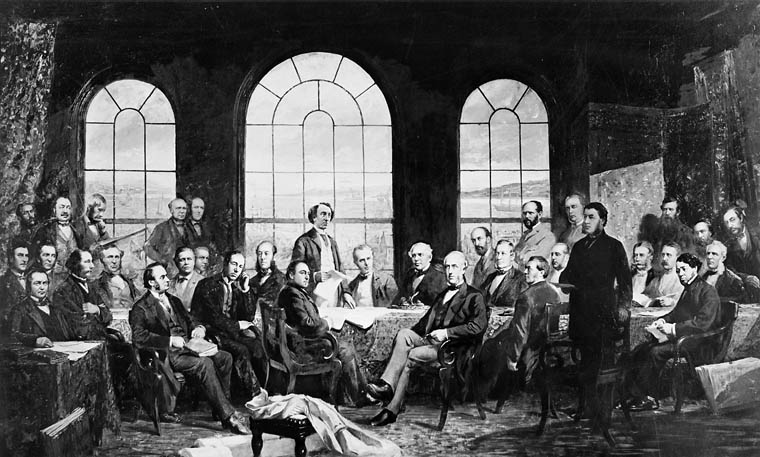Frances Elizabeth Owen “Feo” Monck, author (born 1 August 1835 in Charleville, Enniskerry, County Wicklow, Ireland; died 31 July 1919). Feo Monck’s brother-in-law was governor general Viscount Monck, and her husband, Richard Monck, was military secretary to the governor general from 1864 to 1869. When Lady Monck was absent, she acted as the hostess for viceregal social occasions, including the ball held during the Quebec Conference of 1864. She recorded her experiences in the book, My Canadian Leaves: An Account of a Visit to Canada in 1864–1865.

Viscount Monck and his family at Rideau Hall. Photo taken in Ottawa, Ontario, in 1866.
(photo by Samuel McLaughlin, courtesy Library and Archives Canada/C-21006)
Early Life
Feo was the daughter of Owen Blayney Cole, a poet, and Frances Monck, a talented amateur pianist. Cole was a wealthy landowner, with houses in London and Dublin and a country estate in County Monaghan. Frances Monck was one of 11 daughters to Henry Monck, 1st Earl of Rathdowne. The Coles hosted musical evenings attended by writers, artists and actors, as well as British Prime Minister William Gladstone. Feo was well educated and travelled with her parents to Germany, France, Spain and Belgium. She also spent extended periods at Charleville House in Ireland with her maternal grandparents and her aunt, Elizabeth Monck, who married her first cousin and heir to the estate, Charles Stanley Monck, 4th Viscount Monck.
Marriage
On 13 August 1861, Feo married her mother’s cousin, Richard “Dick” Monck (1829–1904), in Dublin. Monck was a colonel in the Coldstream Guards regiment and the youngest brother of Viscount Monck. Richard and Feo’s eldest son, William Frederick, was born in 1862 and died in infancy. Their second son, Cecil Stanley Owen, was born in 1863. He became an officer in the Coldstream Guards regiment and served in the Boer War.
A Force of Nature
In 1861, Feo Monck’s brother-in-law, Viscount Monck, became governor-in-chief of British North America. In 1864, he offered his brother Richard the position of military secretary. At the last minute, Feo decided to accompany her husband. They lived at Spencer Wood with Viscount and Lady Monck.
Feo’s vivacity contrasted with the more reserved and formal style of her aunt, Lady Monck. Viscount Monck’s great-granddaughter Elisabeth Batt described her as “the perfect ‘house-party girl’” and “always ready to join in an unsophisticated round-game of cards, or to delight the company with her singing of simple ballads or comic songs.” Historian Amanda Foreman described her as “a force of nature, though a gentle one, who was perpetually missing trains, losing hats and spilling anything hot and full to the brim.” Despite their personality differences, they enjoyed a close relationship as aunt and niece, and Feo acted as the viceregal hostess during Lady Monck’s extended visits to Europe.

My Canadian Leaves
Feo Monck kept a journal throughout her first stay in Canada, from May 1864 until May 1865, and recorded her impressions of Canadian society. It was a crucial period in Canadian history, given the ongoing discussions about Confederation and the threat of invasion during the American Civil War. On 19 December 1864, she wrote, “It is an interesting year to be in Canada, between the Confederation business and seeing whether Canada is able and willing to defend herself.” Monck described the threat of an American invasion when Confederate raiders used Canada as a base for operations. (See St Albans Raid.) She later noted on 19 April 1865, “Everyone laughed at me because I said I begged of the G. G. not to go to the theatricals, as [they say] that Booth is in Canada.” (On 14 April 1865, John Wilkes Booth shot American President Abraham Lincoln at Ford’s Theatre in Washington, D.C.)

Confederate raiders (after the raid on St. Albans, Vermont) stand outside the Montréal jail, 1864.
(courtesy Library and Archives Canada/MIKAN 3406806)
Monck was surprised by the informality of Canadian society. She wrote that, at the governor general’s New Year’s Levee in 1865, “The G. G. had to shake hands with every one of the people.” She participated in winter pastimes and, in December 1864, wrote, “One guides the toboggan with a bit of wood; terrible sport, I think, but I must try it once!” She wrote, “Montreal is such a pretty town, like a French town,” but she was “much disgusted with the squalid look of Ottawa.”
Monck sent her journal to her father, who preserved the manuscript. He published it privately in 1873 and publicly in 1891. A complete version was published by the University of Toronto Press in 1963.

The Quebec Conference of 1864
Feo Monck was absent for the beginning of the Quebec Conference. At the time, she was sightseeing at Niagara Falls with a party that included Lord Lyons, British ambassador to the United States. However, she returned for the conference ball. Monck wrote about the Fathers of Confederation at the ball: “It was arranged that I was to follow the G. G. with the Prime Minister, Sir E. Taché, and to dance the first quadrille with him, but Sir E. is so very old that he can’t dance, and he would not take me in for fear of having to dance with me, so he walked in first alone; then came the G. G., then John A. [Macdonald] with me.”

Return to Canada
In May 1865, Richard and Feo Monck went to Ireland on leave. They returned to Canada in late 1867 with their son Cecil and lived with Viscount and Lady Monck in their new Ottawa residence, Rideau Hall. While in Ottawa, Feo Monck was a vocal soloist at the first performance at Her Majesty’s Theatre on Wellington Street, a benefit concert to raise money for St. Bartholomew’s Church. Sir John Young succeeded Viscount Monck as governor general. Richard and Feo Monck remained in Ottawa until the end of his five-year term as military secretary in 1869.
Monck’s two younger children, Beatrice Isabella Bridget and Reginald St. Lawrence, were born in Ottawa in 1868 and 1869, respectively. Both died in infancy and were buried in Dublin.
Later Life
Richard and Feo Monck left Canada in 1869 and divided their time between Dublin and London. Richard returned to service with the Coldstream Guards regiment and became a lieutenant general in 1889. Feo Monck died in 1919.

 Share on Facebook
Share on Facebook Share on X
Share on X Share by Email
Share by Email Share on Google Classroom
Share on Google Classroom





